/ That was the Domain pulse 2024
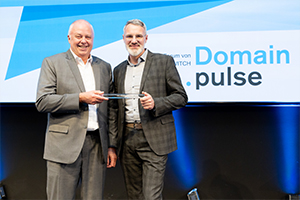
/ nic.at News - 04.03.2024 09:23
That was the Domain pulse 2024
More than 360 people responded to the call of the German-speaking domain registries nic.at, Denic, and Switch for this year's industry meeting in Vienna. Under the motto "Vienna Calling: Domain pulse 2024", the focus was on AI, security, and regulation.
Opening the two-day event at the Erste Campus in Vienna, nic.at CEO Richard Wein stated, "Our industry is undergoing transformation." Topics that were once given little attention are now at the top of the priority list. "As a registry, we are part of critical infrastructure and security has become increasingly important. Stability and reliability are more than just buzzwords for us," emphasized Wein. Among the speakers at this year's Domain pulse were high-profile industry experts including Cyber Security Trend Watcher Peter Zinn, Cyborg Neil Harbisson, and organizational researcher Prof. Dr. Dr. Ayad Al-Ani.
NIS2 – Consolidation feared in the domain industry
The first day of the event was dedicated to experts discussing the new European NIS2 cybersecurity directive. "Cybersecurity is becoming a top priority; boards of directors must oversee the implementation of the new regulations," emphasized Vinzenz Heußler, Policy Officer at the European Commission. Member states have until October 17, 2024, to implement the new directive. Arno Spiegel, responsible for the national NIS2 law at the Austrian Federal Chancellery, provided an overview during the panel discussion: "Currently, about 180 companies in Austria are affected by NIS1, but from October onwards, it will be around 6,000." Many companies will, for the first time, face increased requirements regarding information security, data collection, and verification for the first time.
Regardless of their size, registries and registrars will be subject to the forthcoming directive, with substantial penalties for failure to comply. This has caused widespread concern. Thomas Rickert, a lawyer specializing in domain law, expressed during the panel: "I am concerned that we will end up with a patchwork of regulations in Europe." Additionally, there is concern that smaller companies, due to the increased workload, will no longer offer DNS services, leading to market consolidation.
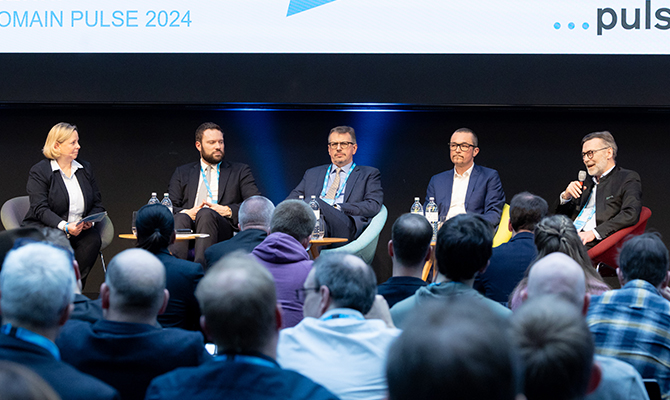
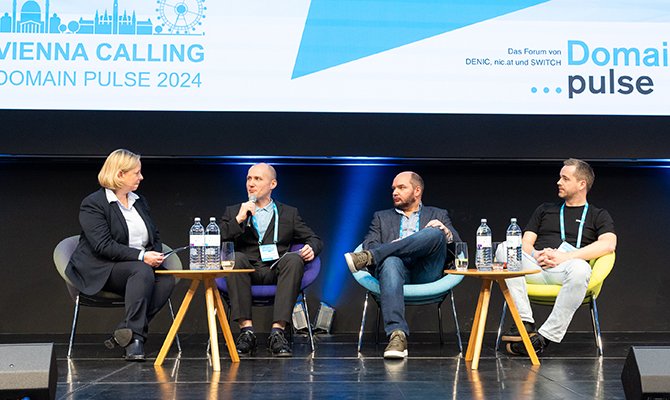
NIS2 Panel 1 (f.l.t.r.): Barbara Schloßbauer (nic.at), Arno Spiegel (Bundeskanzleramt), Robert Schischka (nic.at), Thomas Rickert (rickert.law), Fritz Tupy (WebID Austria) | Photo: (c) Anna Rauchenberger
NIS2 Panel 2 (f.l.t.r.): Barbara Schloßbauer (nic.at), Franz Josef Reischenböck (Ledl.net GmbH), Marco Hoffmann (InterNetX GmbH), Georg Schönberger (XORTEX eBusiness GmbH) | Photo: (c) Anna Rauchenberger
Cyber Security – Preparing for emergencies
Security was also a significant topic at Domain pulse. Dmytro Kohmanyuk, Systems Integration Engineer at the Ukrainian registry .ua, described how the Ukrainian top-level domain operates during times of war. "Having personal contacts and partners is important," emphasized Kohmanyuk. One lesson he drew from challenging times: "There’s no harm in being overly prepared."
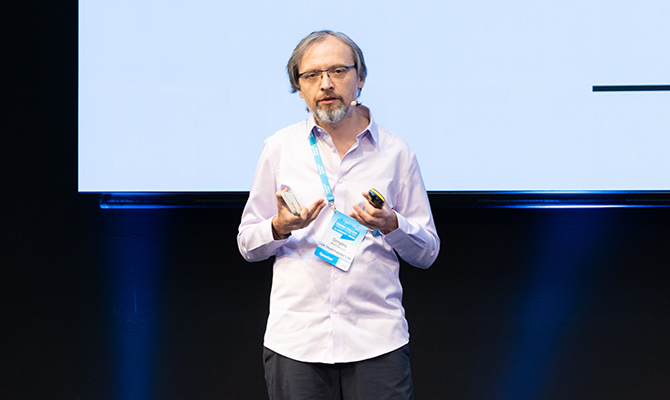
Dymtro Komanyuk (.ua Registry) | Photo: (c) Anna Rauchenberger
During the presentation, Alexander Riepl, a Security Analyst at the Austrian Computer Emergency Response Team CERT.at, outlined the process of a cyberattack targeting an Austrian company. He emphasized the importance of having a designated security contact person within the company, even during vacation periods. "CERT.at is more than a digital fire brigade; we see ourselves as an information hub. However, we rely on the support of companies," emphasized Riepl.
Gazing into the crystal ball: Domain usage
At Domain pulse, experts also looked into the future. Alexander Mayrhofer, Head of Research & Development at nic.at, delved into the modern use of domains. Currently, 75 percent of all domains are used for web and email purposes. However, Mayrhofer pointed out the emergence of Mastodon and Bluesky, two social networks enabling the incorporation of custom domains for identification and usernames.
Where will people convene in the future? Organizational researcher Prof. Dr. Dr. Ayad Al-Ani discussed the central role of cyberspace and described how individuals will unite within network states in the future. "We transition from physical space to the internet, forming a state without borders. Nation-states are recognizing this realm and endeavoring to establish their own presence in the cloud," stated Ayad Al-Ani.
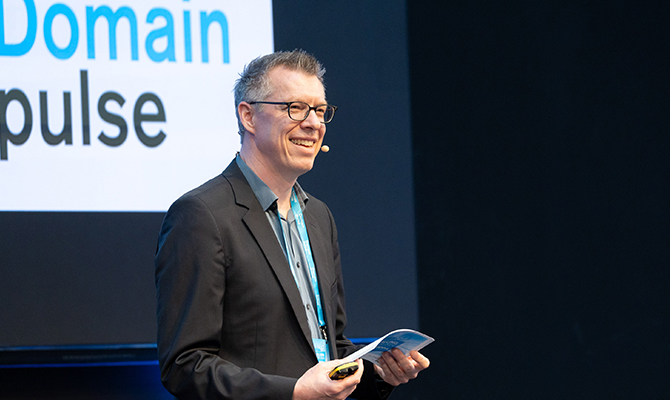
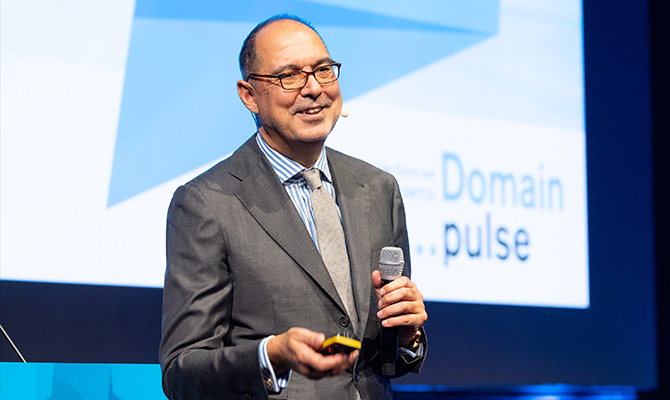
Alexander Mayrhofer (nic.at) and Prof. Dr. Dr. Ayad Al-Ani (Scientist and organizational researcher) | Photo: (c) Anna Rauchenberger
Artificial Intelligence is not a threat; it's a tool
Demonstrating the fusion of humans and technology, Cyborg Artist Neil Harbisson showcased his remarkable journey. Born colorblind, Harbisson had an antenna surgically implanted in his head, enabling him to perceive colors through sound and vibrations, even in the infrared and ultraviolet spectrum. He gained insights such as understanding why cats stare at walls—they're detecting infrared signals. "Embracing technology doesn't distance us from nature; it brings us closer," remarked Harbisson.
Cyber Security Trend Watcher Peter Zinn described in his keynote the influence of Artificial Intelligence on humans. "AI is neither good nor bad. It's a tool that we can use." Zinn outlined the negative effects of AI in the security sector. Soon, it will be possible to clone voices and misuse them. "The biggest challenge in the future will be to recognize fake news as such," said Zinn. Images, videos, or calls will be deceptively real.
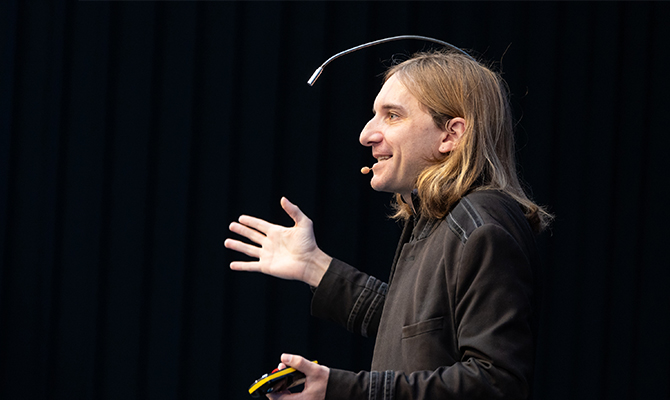
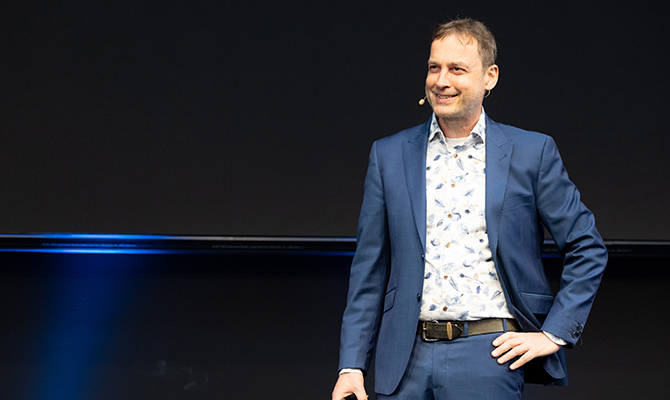
Neil Harbisson (Cyborg Artist) and Peter Zinn (Cyber Security Trend Watcher) | Photo: (c) Anna Rauchenberger
Dr. Norbert Gaus, Executive Vice President at Siemens overseeing Research and Predevelopment, showcased the practical applications of AI. He briefed the audience on Siemens' digital strategy and its integration of AI in industry operations. Within the industrial metaverse, the physical and digital realms are interconnected and synchronized across the entire lifecycle. Siemens Xcelerator, an ecosystem for digital transformation, unites diverse partners and charts the path ahead. Gaus stressed, "Collaboration is essential; no single company can navigate this complexity alone."
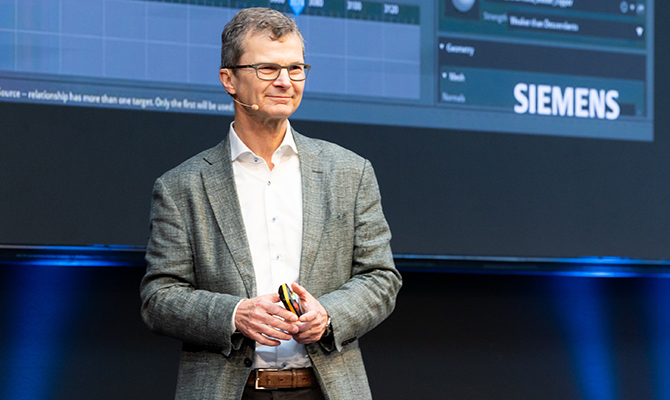
Dr. Norbert Gaus (Siemens AG) | Photo: (c) Anna Rauchenberger
Continued growth in the domain market
But what lies ahead in the domain market? Christopher Mondini, Managing Director Europe of ICANN (Internet Corporation for Assigned Names and Numbers), discussed current developments at ICANN and provided a timeframe for the implementation of new generic top-level domains (gTLDs). "If everything goes according to plan, the first applications for gTLDs could be submitted in the second quarter of 2026," said Mondini.
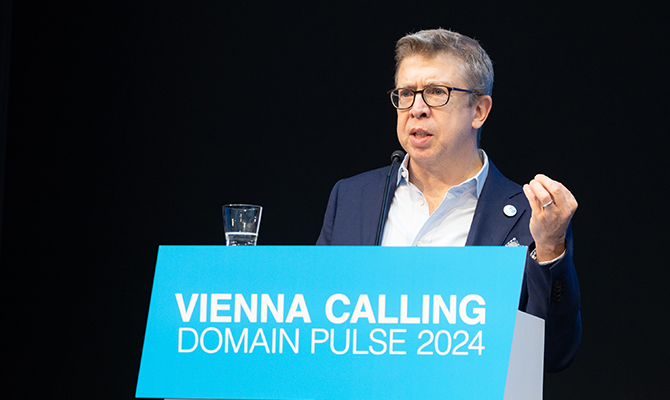
Christopher Mondini (ICANN) | Photo: (c) Anna Rauchenberger
Michael Riedl, CEO of Team Internet Group, shares optimism regarding the future: "We foresee ongoing positive development in domain names. Growth will persist." Richard Wein, CEO of nic.at, echoed this sentiment: "The domain industry will continue to thrive for many more years. Nevertheless, as a registry, we're not solely dependent on one product; we diversify our portfolio with services like Anycast."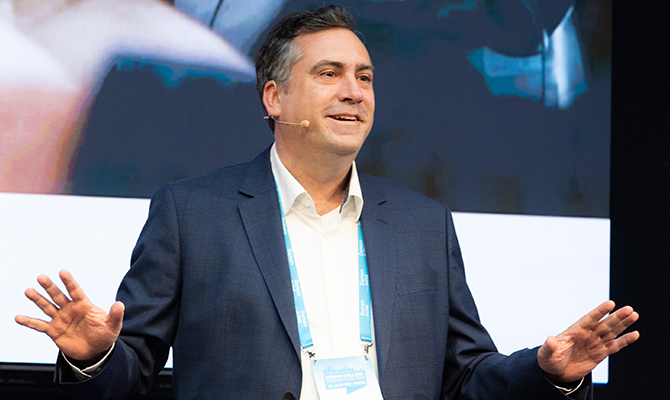
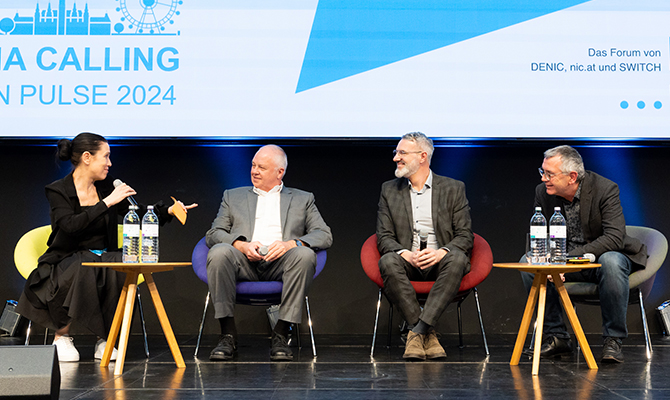
Michael Riedl (Team Internet Group) | Photo: (c) Anna Rauchenberger
DACH-Registry Panel (f.l.t.r.): Sarah Kriesche (Moderator), Richard Wein (nic.at), Andreas Musielak (DENIC eG) and Urs Eppenberger (Switch) | Photo: (c) Anna Rauchenberger
At the end of the two-day event, the location of the next Domain pulse was announced. The domain industry meeting will take place on February 11th and 12th, 2025, at the “Gläserne Manufaktur” in Dresden (Germany).
For information about the program and speakers, visit www.domainpulse.at.